![Davis, Greg: New Primes [VINYL + DOWNLOAD] (Greyfade) Davis, Greg: New Primes [VINYL + DOWNLOAD] (Greyfade)](https://www.teuthida.com/productImages/misc4/32378.jpg)
Using custom-written software to translate prime number sequences into a tonal palette of rich, compatible sounds, Vermont-based electronic musician and sound artist Greg Davis investigates the compositional properties of those numbers by paring the representation of each sequence into a network of pure sine tones which interact with fascinating harmonic and rhythmic structures.
Out of Stock
Quantity in Basket: None
Log In to use our Wish List
Shipping Weight: 24.00 units
Sample The Album:
Greg Davis-performer
Click an artist name above to see in-stock items for that artist.
Edition of 200 copies.
UPC: 195893770731
Label: Greyfade
Catalog ID: 004
Squidco Product Code: 32378
Format: LP
Condition: New
Released: 2022
Country: USA
Packaging: LP
Mixed live-to-2-track at Greyfade Studio, in Brooklyn, New York, on October 3rd and 4th, 2020, by Greg Davis.
"In summer 2016, Greyfade founder Joseph Branciforte found himself at a small record shop in Vermont, stocking up on music for a 6-hour drive back to New York. Among the records he chanced upon that day was a compilation of works composed using just intonation - a system of musical tuning in whole number ratios - which contained a track by electronic musician Greg Davis.
"I kept returning to a particular piece for sine tones, replaying it endlessly, without knowing who or what it was," says Branciforte. "The harmony was like nothing I had ever heard before."
That piece was Davis' Star Primes (For James Tenney), Davis' first foray into composing using just intonation. "I began exploring using prime number sets compositionally around 2008," says Davis. "I was invited by Important Records to contribute a piece for The Harmonic Series compilation and landed on using prime number sets as a way to develop just intonation tuning relationships and intervals. It felt like a unique position for me."
To realize the piece, Davis developed a custom software system in the Max/MSP environment, using a network of pure sine tones. The software allows various prime number sets to be imported and used to control aspects of the musical composition, from its harmonic relationships and rhythm to its form and spatialization. This same system has been in development since 2008, appearing on Davis' 2009 recording Primes (Autumn Records) and in its most recent incarnation on New Primes.
"I start by choosing a fundamental frequency for each piece and multiplying that frequency by each of the prime numbers in a given sequence to determine the overtones above the base frequency," Davis explains. "Most of the overtones are transposed down several octaves to fit within a comfortable 3- or 4-octave audible frequency range. This becomes the 'scale' or harmonic space for each piece. The panning, fades, metronome speed and other variables of each overtone are related to its frequency. Rhythmically, each sine tone follows its own beat cycle by stepping through multiple octaves and silent pauses, which create overlapping prime number rhythmic patterns. The lower overtones generally have faster rhythmic cycles and the higher overtones are slower. All of this acts as a way of relating the rhythmic aspects of the piece to the prime number sequences and integrating it with the harmony, while still retaining a musical texture that sounds interesting to me."
Branciforte and Davis eventually began a correspondence, discussing the musical and software programming details of the project. "Speaking with Greg was a decisive moment in the development of greyfade," says Branciforte, who, at the time, was toying with the idea of starting a record label focused on generative and process-based music. "This was a blueprint for exactly the kind of music I had imagined releasing. There was so much conceptual integrity to it, but it was still addictively listenable."
Davis and Branciforte's conversations led to the first performance of the material in over a decade. "Joseph invited me to rework the Primes project for an 8-channel performance at the Fridman Gallery in New York in 2019," says Davis. "I kept the basic structure of the original Primes software but worked quite a bit on its rhythmic functions, creating the ability to shorten or elongate the time scales of the various tones, as well as developing a method of crossfading between their octave displacements. Finally, I selected a group of new prime number sets to use as material."
New Primes documents this latest evolution of Davis' system, distilling his expansive 2019 multichannel performance into a stereo version designed for home listening. Recorded over two days in October 2020 and mixed live to 2-track by Davis, the music on New Primes ranges from the almost-tonal to the harmonically alien. The titles of the pieces simply refer to the name of the prime number set used.
"The pieces you hear on the finished record are snapshots of an endless generative music that could last for hours, days, or even longer," says Davis.
Although the music on New Primes suggests mathematical relationships with an otherworldly scope and scale, the material was carefully edited and sequenced with an ear towards its album presentation, capturing both the variety and depth of Davis' system in LP form."-Greyfade
Edition of 200 copies.
Artist Biographies
• Show Bio for Greg Davis "The classically-trained Greg Davis, who has largely helped to define subgenres such as folktronica, laptop folk, and pastoral electronica, creates intricate and subtle compositions that merge organic, computer-generated sounds with warm, natural tones, live instrumentation, and field recordings, while referencing artists like Boards of Canada, Brian Wilson and the Incredible String Band. At Depaul University in Chicago, Davis studied classical and jazz guitar, as well as composition and Jazz Studies. In 1996, after years of working with hip-hop groups, jazz combos, free improvisation, and experimental composition, Greg Davis turned to computer-based music. In 1997, Davis started his own label, Autumn Recordings, and in 1999 moved to Boston to pursue his Master's degree in composition, which he received in 2001. By that time, Davis had become a fixture on the Boston experimental music scene, performing solo and as Parallel, with Don Mennerich. That year also saw the release of a various artists CD called Autumnature on Davis' imprint, and the Clouds as Edges 7" on Grounded Records. In February of 2002, Carpark Records released Arbor, Davis' full-length debut, which would set the tone for his often whimsical and bucolic electronic pieces. In August of that year, Davis moved back to Chicago and began work on his follow-up record while touring extensively and globally. He has played with such influential acts as Animal Collective, Hrvatski, the legendary :zoviet*france:, David Grubbs, Blectum From Blechdom, Jan Jelinek, and Ogurusu Norihide. May of 2002 brought a split 7" on Autumn with Don Mennerich and in 2003, Davis put out a record on Melektronikk (the Precursors 7") and a live CD (Mort Aux Vaches) on experimental mainstay Staalplaat. Curling Pond Woods -- Greg Davis' sophomore release -- carries laptop folk to its logical extreme, but also quietly demolishes any genre constraints in the process. With a Beach Boys cover setting the vibe for the album, Curling Pond Woods is Davis' first true opus, fundamentally a brilliant pop record that requires no other modifiers."-Charles Spano ^ Hide Bio for Greg Davis
7/1/2025
Have a better biography or biography source? Please Contact Us so that we can update this biography.
Track Listing:
SIDE A
1. Sophie Germain 05:53
2. Irregular 09:05
3. Proth 04:49
SIDE B
1. Pierpont 06:16
2. Cullen 04:57
3. Euclid 07:35
Electro-Acoustic
Compositional Forms
Electronic Forms
Sound, Noise, &c.
Solo Artist Recordings
New in Experimental & Electronic Music
Vinyl Recordings
Search for other titles on the label:
Greyfade.


![Davis, Greg: New Primes [VINYL + DOWNLOAD] (Greyfade) Davis, Greg: New Primes [VINYL + DOWNLOAD] (Greyfade)](https://www.teuthida.com/productImages/full/32378.Full.jpg)

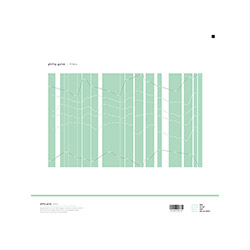



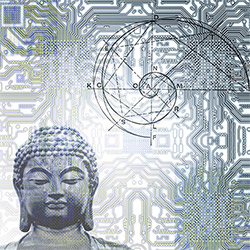



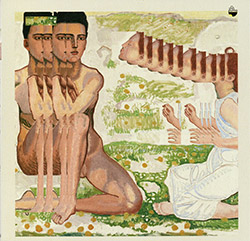



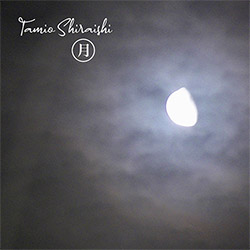




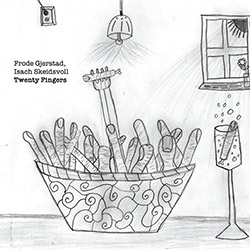
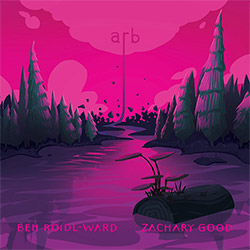


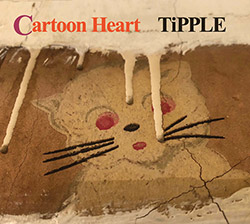













![Deupree, Jerome / Sylvie Courvoisier / Lester St. Louis / Joe Morris: Canyon [2 CDs]](https://www.teuthida.com/productImages/misc4/36404.jpg)


![Eternities: Rides Again [CASSETTE]](https://www.teuthida.com/productImages/misc4/36247.jpg)

![Lopez, Francisco: Untitled (2021-2022) [2 CDs]](https://www.teuthida.com/productImages/misc4/36438.jpg)




![Eventless Plot | Haarvol: The Subliminal Paths [CASSETTE + DOWNLOAD]](https://www.teuthida.com/productImages/misc4/36232.jpg)












![Eventless Plot | Francesco Covarino: Methexis [CASSETTE + DOWNLOAD]](https://www.teuthida.com/productImages/misc4/36231.jpg)



![Das B (Mazen Kerbaj / Mike Majkowski / Magda Mayas / Tony Buck): Love [VINYL]](https://www.teuthida.com/productImages/misc4/36329.jpg)


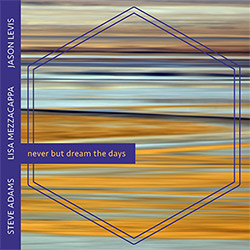
![Hemphill Stringtet, The: Plays the Music of Julius Hemphill [VINYL]](https://www.teuthida.com/productImages/misc4/36409.jpg)

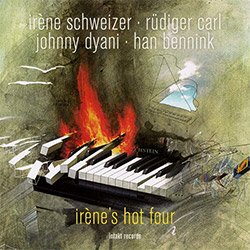

![Halvorson, Mary Septet: Illusionary Sea [2 LPS]](https://www.teuthida.com/productImages/misc4/17952.jpg)

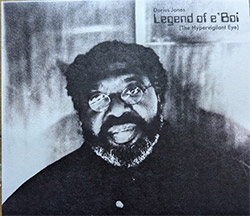




![Money : Money 2 [2 CDs]](https://www.teuthida.com/productImages/misc4/35894.jpg)




![Klinga, Erik: Elusive Shimmer [VINYL]](https://www.teuthida.com/productImages/misc4/36258.jpg)
![CHANGES TO blind (Phil Zampino): Volume 9 - I Wave on a Fine Vile Mist [CD + DOWNLOAD]](https://www.teuthida.com/productImages/misc4/36061.jpg)

![Wallmart / Rubbish: Asset Protection [split CD]](https://www.teuthida.com/productImages/misc4/35900.jpg)


![+Dog+: The Family Music Book Vol. 5 [2 CDs]](https://www.teuthida.com/productImages/misc4/35897.jpg)
![Kuvveti, Deli : Kuslar Soyledi [CASSETTE w/ DOWNLOAD]](https://www.teuthida.com/productImages/misc4/36107.jpg)

![Nakayama, Tetsuya: Edo Wan [CASSETTE w/ DOWNLOAD]](https://www.teuthida.com/productImages/misc4/36105.jpg)
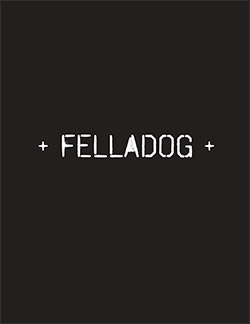



![Yiyuan, Liang / Li Daiguo: Sonic Talismans [VINYL]](https://www.teuthida.com/productImages/misc4/35957.jpg)
![Brown, Dan / Dan Reynolds: Live At The Grange Hall [unauthorized][CASSETTE]](https://www.teuthida.com/productImages/misc4/36245.jpg)








![Palestine, Charlemagne / Seppe Gebruers: Beyondddddd The Notessssss [VINYL]](https://www.teuthida.com/productImages/misc4/36206.jpg)
![Palestine, Charlemagne / Seppe Gebruers: Beyondddddd The Notessssss [NEON GREEN VINYL]](https://www.teuthida.com/productImages/misc4/36207.jpg)

![Laubrock, Ingrid: Purposing The Air [2 CDs]](https://www.teuthida.com/productImages/misc4/35639.jpg)

![Yoko, Ono / The Great Learning Orchestra: Selected Recordings From Grapefruit [2 CDs]](https://www.teuthida.com/productImages/misc4/35841.jpg)









![Zorn, John / JACK Quartet: The Complete String Quartets [2 CDs]](https://www.teuthida.com/productImages/misc4/35609.jpg)

![Lonsdale, Eden: Dawnings [2 CDs]](https://www.teuthida.com/productImages/misc4/35480.jpg)



![Sorry For Laughing (G. Whitlow / M. Bates / Dave-Id / E. Ka-Spel): Rain Flowers [2 CDS]](https://www.teuthida.com/productImages/misc4/35985.jpg)

![Rolando, Tommaso / Andy Moor : Biscotti [CASSETTE w/ DOWNLOADS]](https://www.teuthida.com/productImages/misc4/36106.jpg)


![Electric Bird Noise / Derek Roddy: 8-10-22 [CD EP]](https://www.teuthida.com/productImages/misc4/35970.jpg)








![Elephant9 : Mythical River [VINYL]](https://www.teuthida.com/productImages/misc4/34624.jpg)



![Elephant9 with Terje Rypdal: Catching Fire [VINYL 2 LPs]](https://www.teuthida.com/productImages/misc4/35355.jpg)
![Deerlady (Obomsawin, Mali / Magdalena Abrego): Greatest Hits [VINYL]](https://www.teuthida.com/productImages/misc4/34876.jpg)







![Surplus 1980: Illusion of Consistency [CD]](https://www.teuthida.com/productImages/misc4/35069.jpg)
![Staiano, Moe: Away Towards the Light [VINYL + DOWNLOAD]](https://www.teuthida.com/productImages/misc4/35037.jpg)
![Coley, Byron: Dating Tips for Touring Bands [VINYL]](https://www.teuthida.com/productImages/misc4/17906.jpg)

![Lost Kisses: My Life is Sad & Funny [DVD]](https://www.teuthida.com/productImages/misc4/lostKissesDVD.jpg)